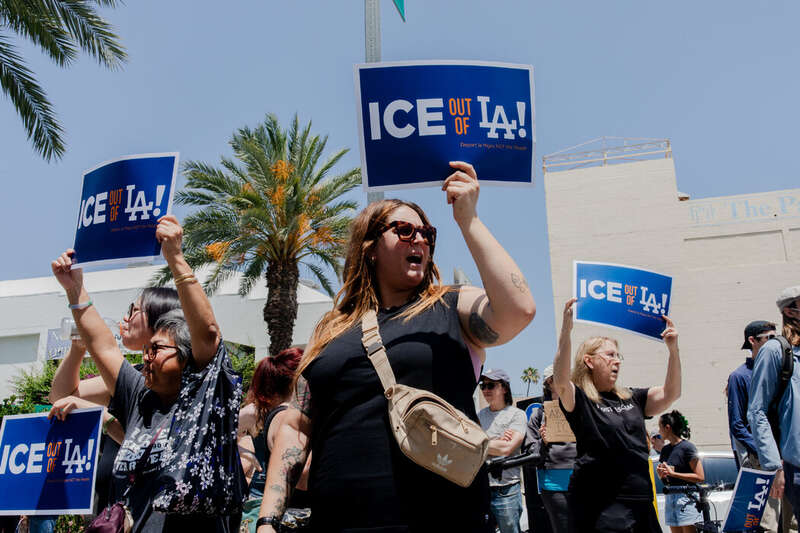In recent days, protests have been escalating across the United States, with Los Angeles at the center of the unrest. The situation has now spread to other major cities, including New York and Minneapolis, as people take to the streets to voice their concerns over immigration policies and the deployment of military forces.
Los Angeles: The Epicenter of the Protests
The protests in Los Angeles began on June 8, 2025, as a response to the Trump administration’s immigration policies and the increased raids conducted by the US Immigration and Customs Enforcement (ICE). Demonstrators gathered outside federal detention centers, demanding the release of detained immigrants. However, the situation quickly turned violent, with reports of vandalism, arson, and clashes with law enforcement. The Los Angeles Police Department (LAPD) imposed a curfew in the downtown area to control the unrest.
President Donald Trump’s decision to deploy the National Guard and the Marines to Los Angeles has further inflamed tensions. California Governor Gavin Newsom has criticized the federal response as an “abuse of power,” arguing that it unnecessarily militarized the situation and traumatized communities. The state has filed a legal challenge against the deployment of military forces, claiming it violates state sovereignty.
New York: Protests Spread
The unrest in Los Angeles has inspired similar protests in New York City. On June 10, hundreds of protesters gathered outside the city’s main immigration court. The demonstration eventually led to clashes with law enforcement, resulting in 86 arrests. The protesters in New York were also voicing their opposition to the Trump administration’s immigration policies and the use of federal forces to suppress dissent.
Minneapolis: Joining the Movement
Minneapolis has also seen its share of protests in solidarity with Los Angeles and New York. While specific details of the Minneapolis protests are not as extensively covered, the city has a history of social activism and has often been at the forefront of movements addressing issues of social justice and immigration. The protests in Minneapolis reflect a broader trend of cities across the US standing in solidarity against what they perceive as unjust federal policies.
The Broader Context
The protests are not just about immigration; they are also a response to the perceived overreach of federal authority. Critics argue that the deployment of military forces on US soil sets a dangerous precedent and undermines the principles of state sovereignty and civil liberties. The situation has also highlighted the deep divisions within the country, with some supporting the administration’s hardline stance on immigration, while others see it as a violation of human rights and civil liberties.
Conclusion
The protests in Los Angeles, New York, and Minneapolis represent a significant escalation in the ongoing debate over immigration and federal authority in the United States. As tensions continue to rise, it remains to be seen how the government will address these issues and whether the current unrest will lead to broader changes in policy and governance. The situation underscores the importance of dialogue and the need for a balanced approach that respects both national security and civil liberties.

